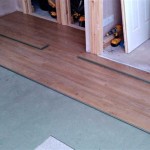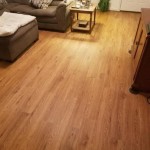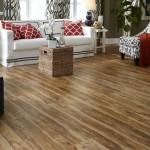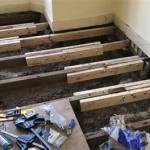Essential Aspects of Luxury Vinyl Plank Flooring
Luxury vinyl plank (LVP) flooring is a popular choice for many homeowners due to its durability, affordability, and stylish appearance. If you're considering installing LVP flooring in your home, it's important to be aware of the essential aspects to ensure you make the best decision for your needs. In this comprehensive guide, we'll cover everything you need to know about LVP flooring, including its benefits, drawbacks, different types, installation process, and maintenance tips.
Benefits of LVP Flooring
LVP flooring offers numerous benefits that make it an attractive option for homeowners. Some of these benefits include:
- Durability: LVP flooring is highly durable and can withstand heavy foot traffic, making it ideal for busy households and commercial spaces.
- Waterproof: Unlike traditional hardwood flooring, LVP flooring is 100% waterproof, making it a great choice for kitchens, bathrooms, and other moisture-prone areas.
- Affordability: LVP flooring is more affordable than many other types of flooring, such as hardwood or tile, while still offering a luxurious look and feel.
- Easy to install: LVP flooring is relatively easy to install, even for DIY enthusiasts. It can be installed over most subfloors, including concrete, wood, and tile.
Drawbacks of LVP Flooring
While LVP flooring offers many benefits, it also has some potential drawbacks to consider. These include:
- Can be slippery: LVP flooring can be slippery when wet, so it's important to use non-slip mats or rugs in areas where there is a risk of spills.
- Prone to scratching: LVP flooring is not as scratch-resistant as some other types of flooring, such as ceramic tile. However, scratches can be minimized by using furniture protectors and cleaning the floor regularly.
- Can be noisy: LVP flooring can be noisy if it is not installed properly or if there is unevenness in the subfloor.
Types of LVP Flooring
There are two main types of LVP flooring:
- Solid core: Solid core LVP flooring is made of a single piece of material, which makes it more durable and stable than other types of LVP flooring. It is also more expensive.
- Engineered core: Engineered core LVP flooring is made of multiple layers of material, which makes it more flexible and easier to install. It is also less expensive than solid core LVP flooring.
Installation of LVP Flooring
LVP flooring can be installed over most subfloors, including concrete, wood, and tile. The installation process typically involves the following steps:
- Prepare the subfloor by making sure it is level and smooth.
- Install an underlayment to provide cushioning and sound insulation.
- Install the LVP planks by locking them together.
- Trim the planks to fit around walls and other obstacles.
- Seal the joints between the planks with caulk.
Maintenance of LVP Flooring
LVP flooring is relatively easy to maintain. To keep your floor looking its best, follow these tips:
- Sweep or vacuum your floor regularly to remove dirt and debris.
- Mop your floor occasionally with a pH-neutral cleaner.
- Avoid using harsh chemicals or abrasive cleaners on your floor.
- Place furniture protectors under heavy furniture to prevent scratches.
- Immediately clean up spills to prevent stains.

Luxury Vinyl Plank Flooring Review Home Cute Little

My Luxury Vinyl Plank Flooring Review Pros And Cons Average But Inspired

Unbiased Luxury Vinyl Plank Flooring Review Cutesy Crafts

Luxury Vinyl Plank Flooring Review The Turquoise Home

Luxury Vinyl Plank Flooring Review The Turquoise Home

Vinyl Plank Flooring Review 2 Years Later Love Renovations

My Vinyl Plank Floor Review Two Years Later Cutesy Crafts

My Luxury Vinyl Plank Flooring Review Pros And Cons Average But Inspired

Unbiased Luxury Vinyl Plank Flooring Review Cutesy Crafts

Provea Vinyl Plank Flooring Review Sprucing Up Mamahood
Related Posts








